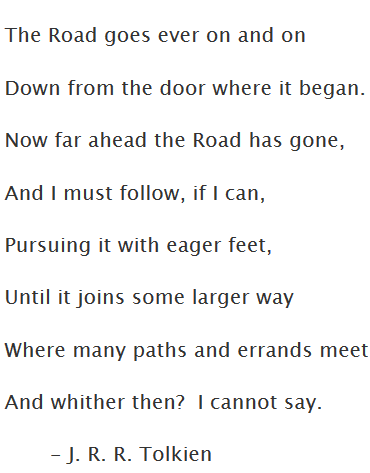 |
Lecture 77 - The End? No, the Beginning!
It's been great teaching this course. While this is the end of the course, there is much more to say about applied category theory, which is quite a large subject. And it's far from done: its best days, I believe, are still ahead. Maybe you can help develop it further!
What should you do next? Well, it makes a lot of sense to finish reading our textbook:
- Brendan Fong and David Spivak, Seven Sketches in Compositionality. (See also their videos of lectures on the book.)
But it will also be good to read this 50-page 'booklet':
- Tai-Danae Bradley, What Is Applied Category Theory? (Blog article here.)
Tai-Danae wrote this based on Applied Category Theory 2018; she attended both the 'school' and the following 'workshop'. She's great at explaining things, so this short book is a lot of fun to read.
Tai-Danae focuses on two examples of applied category theory.
First, she explains the 'decorated cospan categories' invented by Brendan Fong when he was doing his thesis with me. These are a general way of dealing with categories where the morphisms are networks. You can read more about them in Section 6.4 of Seven Sketches, and even more here:
- Brendan Fong, The Algebra of Open and Interconnected Systems, Ph.D. thesis, University of Oxford, 2016. (Blog article here.)
Brendan used them to study electrical circuits, and we've gone further with that application here:
- John Baez and Brendan Fong, A compositional framework for passive linear networks. (Blog article here.)
But Tai-Danae focuses on another application of decorated cospan categories - namely, to chemical reaction networks! This was developed Blake Pollard, another student of mine:
- Blake Pollard, Open Markov Processes and Reaction Networks, Ph.D. thesis, U. C. Riverside, 2017.
Second, she explains Lambek's approach to linguistics based on 'pregroup grammars'. If you enjoyed how this course focused on posets, I bet you'll really like pregroups. A pregroup is just a monoidal poset that's compact closed!
We started talking about commutative monoidal posets all the way back in Lecture 21, but in applications to linguistics we don't want commutativity - because the order of words matters! We discussed compact closed symmetric monoidal categories in Lecture 74, but Tae-Danae explains more general compact closed categories that are just monoidal, not symmetric monoidal - again, because the order of words matters.
So, if you understood this course, you only need a tiny bit more to get the idea of a pregroup. The fun part is to see how pregroups are used to study words, phrases and sentences!
Lambek was a very interesting guy - perhaps the first to understand the connection between category theory and the lambda calculus - and his work is fun to read:
- Joachim Lambek, Pregroups and natural language processing, The Mathematical Intelligencer 28 (2006), 41–48.
But the current revival of interest in pregroup grammars may have been started by this paper:
- Bob Coecke, Mehrnoosh Sadrzadeh, and Stephen Clark, Mathematical foundations for a compositional distributional model of meaning, in the Lambek Festschrift, special issue of Linguistic Analysis, 2010. (Blog article here.)
This should be enough to keep you going for a while. I hope you have many pleasant adventures... and don't be afraid to email me at baez@math.ucr.edu with questions or comments!


To read other lectures go here.
 |